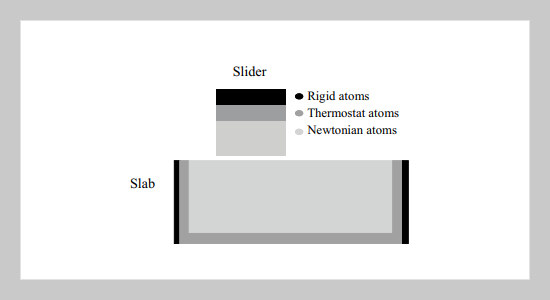Yeau-Ren Jeng This email address is being protected from spambots. You need JavaScript enabled to view it.1, Ping-Chi Tsai1 and Te-Hua Fang2 1Department of Mechanical Engineering National Chung Cheng University Chiayi, Taiwan 621, R.O.C.
2Department of Mechanical Engineering Southern Taiwan University of Technology Tainan, Taiwan 710, R.O.C.
Received:
July 13, 2004
Accepted:
September 25, 2004
Publication Date:
December 1, 2004
Download Citation:
||https://doi.org/10.6180/jase.2004.7.4.03
A slider-slab sliding model for hard-to-soft and soft-to-soft sliding systems with abrasive and non-abrasive wear conditions is used to investigate atomic-scale friction. The molecular dynamics simulation uses the Morse potential to calculate interatomic forces between atoms. Separation distance between the slider and the slab is changed to simulate repulsive and attractive interactive force fields exerted on interface between two sliding components. Effects of the interaction potential parameters on the sliding friction are investigated. Frictional force, normal force and temperature rise of the slider and the slab are calculated during sliding. Comparison of the hard-to-soft and the soft-to-soft sliding system are carried out and shows different tribological phenomena.ABSTRACT
Keywords:
Molecular Dynamics, Morse Potential, Friction, Abrasive Wear
REFERENCES









